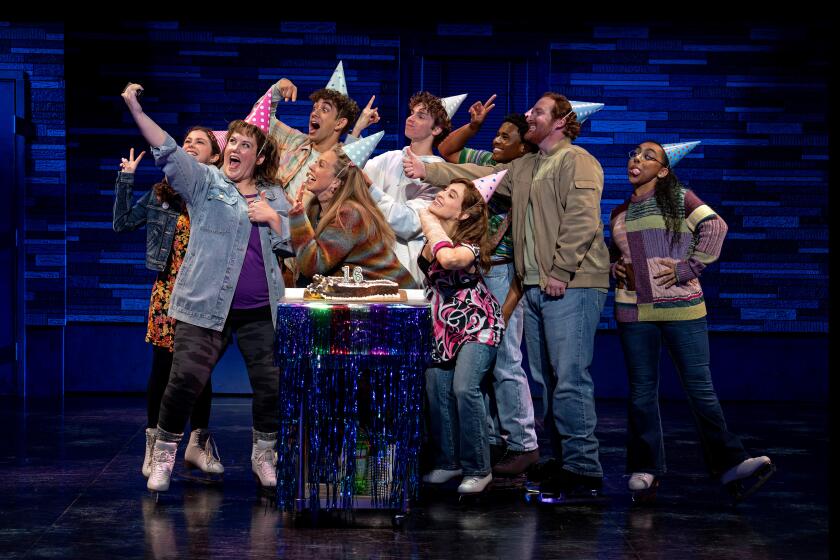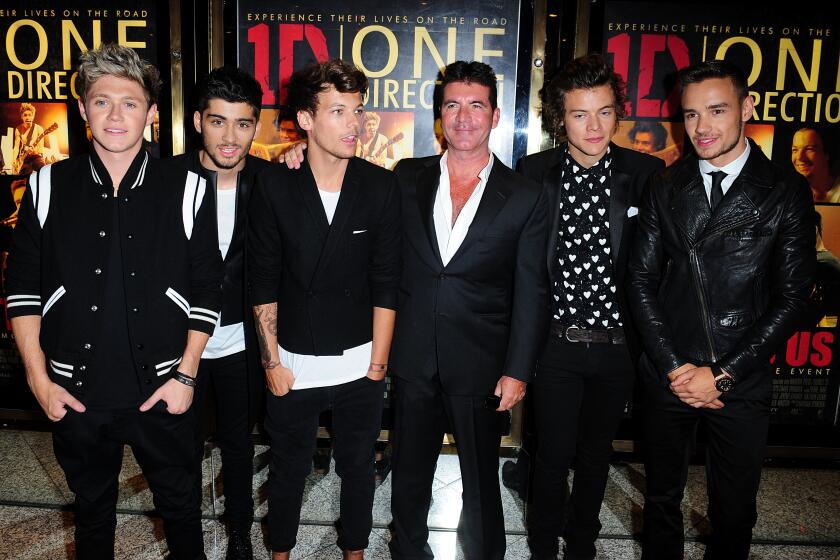O.C. MUSIC : Clarinetist Will Swing Into Copland
It should come as no surprise to anyone familiar with the music of Aaron Copland that the most American of 20th Century composers was much taken with jazz, that quintessentially American form. So when one of the greatest jazz instrumentalists of all, Benny Goodman, commissioned Copland to write a new work for him in 1947, Copland had the perfect opportunity to translate his fascination into music of his own.
It wasn’t the first time Goodman had asked a major composer to write something for him. As committed to orchestral and chamber music as he was to making his clarinet sing, sing, sing, Goodman also elicited new compositions from Bela Bartok, Darius Milhaud, Paul Hindemith and Morton Gould, among others.
But he may have gotten a little something extra in the Clarinet Concerto that Copland devised for him.
James Kanter, the principal clarinetist for the Pacific Symphony who will play the Copland piece with the orchestra in Costa Mesa tonight and Thursday, said it seems to him “that in the case of the Bartok, the Hindemith and the Milhaud, those pieces are really Bartok, Hindemith and Milhaud being Bartok, Hindemith and Milhaud. And those pieces are beautiful. Not to take anything away from them, but they made no effort to write anything except their music for the clarinet.
“Copland was different, I think,” Kanter said. “Copland really wanted to write a piece for Benny. He wanted it to be a piece of Copland, to be sure, because the opening is very much (akin to) ‘Appalachian Spring’ or some of (his) beautiful prairie music. But once it gets through the beginning of the clarinet cadenza, it becomes a jazz piece, a swing-style piece.
“When the rest of the orchestra comes back in, my impression of it is a jam session with the clarinet and orchestra. It has all these little riffs and things that really sound like Benny. . . . It’s very obvious that Copland made every effort to keep Benny in mind.”
The 17-minute piece, a single movement in three sections, premiered in 1950, two years after Copland delivered it to Goodman. Copland remembered Goodman saying that he was “only a jazz man” who might not have the technique to handle it--a bit of fretting that Copland brushed aside.
Ironically, though, Copland left no space in his concerto for improvisation, an area in which Goodman was second to none.
“It’s all written out,” Kanter said of the lengthy cadenza. “I understand Eddie Daniels embellishes the cadenza. A pianist friend of mine said Vladimir Horowitz (is) the only guy he knew who would take Lizst and add notes. I would say Eddie Daniels is the only guy I know who would take the cadenzas of the Copland Clarinet Concerto and add a bunch of notes. For the rest of us, we’re running uphill just to keep up.”
Kanter’s familiarity with the concerto, and with music of Benny Goodman, is not just the result of his having spent more than 20 years as a professional clarinetist (at 49, he keeps busy as one of Hollywood’s top studio musicians when he’s not rehearsing or performing with the Pacific, the Hollywood Bowl orchestra or the various ad hoc chamber music groups with whom he’s played over the years).
Kanter’s father, Ben--who recently marked his 85th birthday--”was a very good jazz clarinet player, knew Benny Goodman and played (alto saxophone) in Benny’s band. They were very good friends in New York and free-lanced together. So from the beginning of the cadenza on out to the end of the piece, this is like my roots. The style the piece requires, it’s just in my roots, all the way back to the first sounds I heard on clarinet from my father.”
A Glendale native, Kanter actually got equal exposure to jazz, orchestral and chamber music from his father, who played in orchestras and chamber groups as well as in jazz bands and at Hollywood movie studios. Kanter’s mother was a dancer who “was really disappointed I didn’t wind up being a cocktail lounge pianist. She really was.”
Kanter didn’t get serious about his clarinet playing until college. He’d taken lessons at age 13 from his father but only briefly. However, he recalled, “The instrument somehow stayed in my room. In my sophomore year of college, I sort of found it and started playing it. My parents had a music store where I worked”--Baxter-Northup in Sherman Oaks (it still exists)--”and I was always surrounded by musicians there. I don’t know what it was, but something finally just clicked.”
He received his music degree in clarinet performance from Cal State Northridge and quickly moved into teaching (at UC Santa Barbara and other schools), studio session work and appearances with symphonic groups. When Keith Clark was forming the Pacific Symphony at Cal State Fullerton in the late ‘70s, he invited Kanter to take part. Kanter declined because of other commitments but in 1985, he asked Clark if the invitation were still open. It was, and he has been the orchestra’s principal clarinetist ever since.
In fact, it was at the Pacific Symphony that he met his wife, Debbie. “I owe a lot to the Pacific Symphony,” he said. “May it live forever.”
Between movie and TV soundtracks, advertising spots, other commercial projects and what he called “in-front-of-an-audience music,” Kanter estimated he plays from from 600 to 700 “services” a year. (A “service” is musicians’ union jargon for a paying job. Kanter might do two separate recording sessions and an orchestral performance, a total of three “services,” in the space of one day.)
He said that as a result of these many duties, and in order to make time to practice--not to mention for “a quiet dinner with Debbie”--he has given up sideline work making clarinet mouthpieces. He also, for all intents, has given up playing chamber music.
“I’ve kind of reached a crossroads in my life as a chamber musician,” he said. “I’ve played lots of chamber music, and almost always it is with colleagues who are very good. Almost always it’s an ad hoc group formed for the purpose of playing one, maybe two, concerts--not what I would call a real chamber ensemble.
“I love it so much and have such a respect for chamber repertoire that I would rather not do it unless we can do it as an ensemble with a commitment to being an ensemble. There’s a polish that comes about that can’t happen any other way. So for those reasons, I don’t pursue it.”
Still, when it comes to making music the way he thinks it should be made, Kanter reserves the right to invoke the Jell-O defense: There’s always room for a little more.
“We’ve have had some conversations among some of us in the Pacific, in the hope that there could be a Pacific Symphony Chamber Players,” he said. “If a small ensemble like that does happen, and if it looked like it was really going to be good, that’s something I would make a place for.”
* James Kanter plays Copland’s Clarinet Concerto with the Pacific Symphony, conducted by Carl St. Clair, tonight and Thursday at the Orange County Performing Arts Center, 600 Town Center Drive, Costa Mesa. Also on the program: the Overture to Mozart’s “The Magic Flute” and Shostakovich’s Symphony No. 5. Curtain: 8 p.m. $12 to $36. (714) 740-2000 (TicketMaster).
More to Read
The biggest entertainment stories
Get our big stories about Hollywood, film, television, music, arts, culture and more right in your inbox as soon as they publish.
You may occasionally receive promotional content from the Los Angeles Times.










